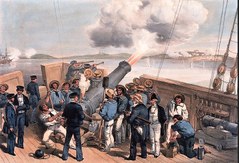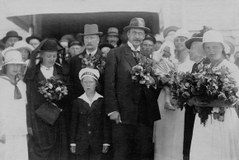100 years of autonomy: Åland celebrates
Document Actions
Document Actions
Celebrations were particularly joyful this year as autonomy was market on 9 June by the statue of Julius Sundblom in Mariehamn (above).

Åland’s road to autonomy has been paved with dramatic events. How did it become an island of peace, when Russia had begun the construction of a colossal fortress in Bomarsund which was later attacked and destroyed by French and British forces in 1854 (above)?
After the Russian March Revolution of 1917 and before Finland had declared independence, people in Åland – an old Swedish province – started to talk about reunification with Sweden. This was the beginning of the Åland Movement. Secret meetings were held, names gathered and the desire for reunification was put to the Swedish king and government.
Finland opposed Åland’s desire for reunification but was ready to grant the island some form of autonomy. In 1920, the Finnish parliament passed an autonomy act, but Ålanders refused to recognise it.
Instead, they once more approached the Swedish king and government with their request, which angered the Finnish government. Two of the Åland leaders – Julius Sundblom and Carl Björkman – were sentenced to prison on treason charges.

Sundblom and Björkman are welcomed after their release from prison.
As this was seen as an international conflict, the issue was brought in front of the newly created League of Nations. At a 1921 meeting in Geneve, a compromise was reached which should please all three parties – Sweden, Åland and Finland.
Finland got sovereignty over Åland but had to guarantee the protection of the existing Swedish language and culture as well as the autonomy that had already been offered. A demilitarisation agreement was also reached so that Åland could not represent a military threat to Sweden.
The centenary is celebrated from 9 June this year until 9 June 2021 under the slogan “100 years of willfulness”.
The programme includes public celebrations, a new opera, an art promenade, writing competitions and seminars on peaceful conflict resolution.
Illustration and photo: Wikipedia